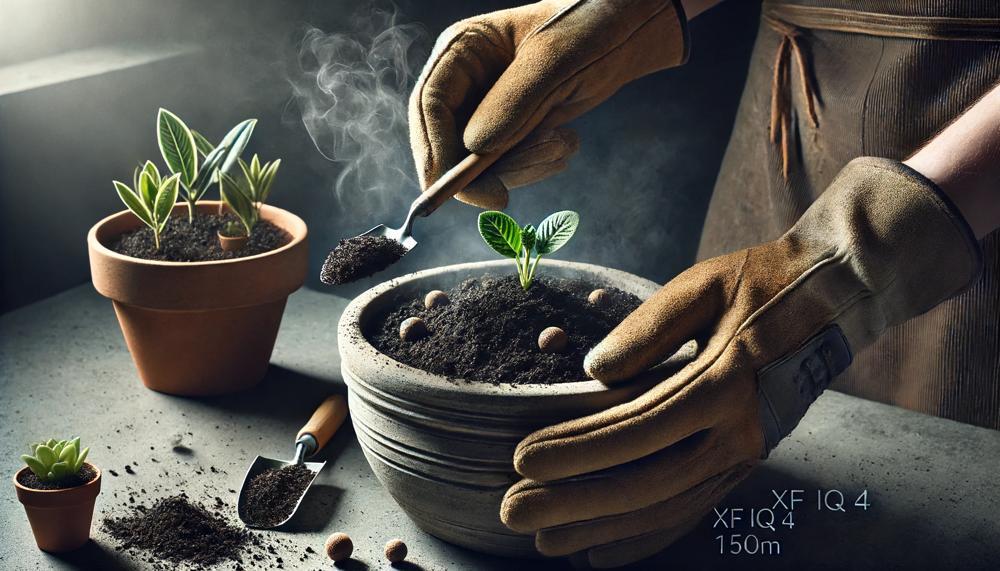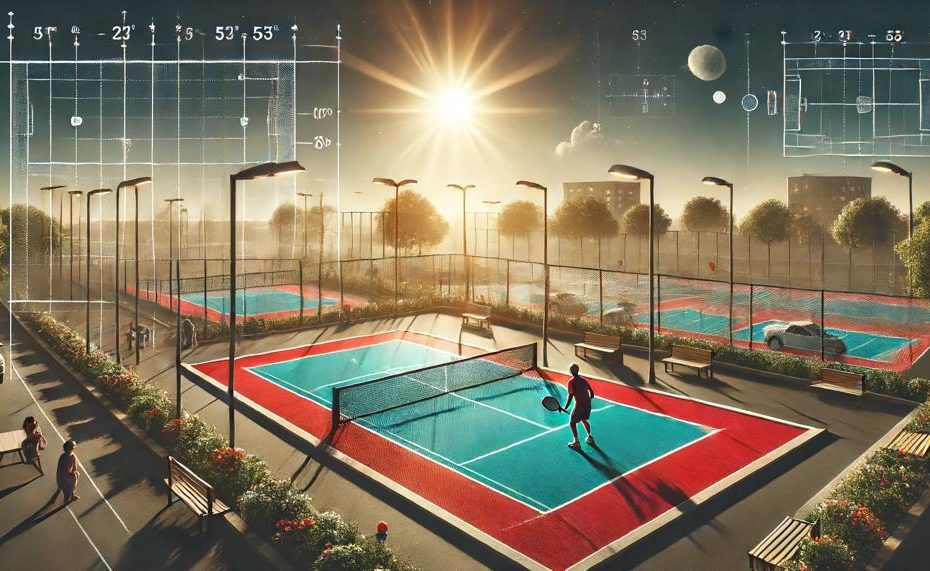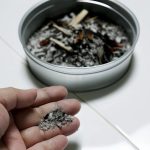Potting soil is a staple for any gardener, providing essential nutrients and support for plant growth. However, once its purpose has been served, disposing of it can pose a dilemma. Improper disposal not only impacts the environment but also clogs up valuable landfill space. So, what’s the best way to get rid of potting soil?
First, let’s consider what potting soil consists of: a blend of organic materials like peat moss, compost, and vermiculite, mixed with inorganic elements such as perlite or sand. This mix ensures plants get the best environment to thrive. But once plants are done, what’s next for the soil?
Here are some environmentally friendly methods to dispose of potting soil:
- Composting: Turn your used potting soil into rich compost. Ensure it’s free from diseased plants and weed seeds to avoid contamination.
- Reuse in Gardens: Enrich garden beds with the old potting soil by mixing it with fresh compost.
- Construction Projects: Use large quantities of potting soil as filler material, mixed with sand or gravel for lightweight and porous construction bases.
- Local Waste Management: Check if your local waste facilities offer specific disposal guidelines or composting services.
By following these steps, you not only ensure the proper disposal of potting soil but also contribute to environmental conservation. Taking these small yet impactful actions helps keep our gardens green and our planet cleaner.
Contents
How To Dispose Of Old Potting Soil?
Reuse and Store
If the potting soil is still in good condition and free of diseases or pests, you can store it for future use. Keep it in a sealed container to prevent contamination and drying out.
Composting
Adding old potting soil to your compost pile is an excellent way to recycle it. The organic materials in the soil will break down and enrich the compost, making it nutrient-rich for future use in gardens.
Yard Waste Drop-Off Programs
Many cities offer yard waste drop-off programs where you can dispose of old potting soil. These programs often turn yard waste into compost, which can then be used in public gardens or made available to residents.
Enhance Garden Beds
Old potting soil can be mixed into your garden beds to improve soil structure and drainage. This method gives plants a fresh start with added nutrients.
Proper Disposal of Diseased Soil
If your potting soil contains diseased plants, it’s crucial to dispose of it properly to prevent the spread of disease. Dispose of it in a landfill or follow local regulations for hazardous waste.
Use as Construction Filler
In some cases, old potting soil can be used as filler for construction projects. Mix it with sand or gravel to create a lightweight and porous base material.
What Are The Risks Of Recycling Old Potting Soil?
The short answer is yes, there are potential dangers or concerns when it comes to reusing old potting soil. These concerns include nutrient depletion, pest infestation, disease transmission, and poor soil structure.
Addressing these issues involves several key steps to ensure the soil is safe and effective for reuse.
Potential Dangers of Reusing Old Potting Soil
| Danger | Description | Solution |
| Nutrient Depletion | Over time, plants absorb essential nutrients from the soil, leaving it less fertile. | Add organic matter such as compost, or use a balanced fertiliser to replenish nutrients. |
| Pest Infestation | Old soil can harbour pests like insects, which can harm new plants. | Sterilize the soil by baking it in the oven at 180°F (82°C) for 30 minutes, or expose it to sunlight for a few days. |
| Disease Transmission | Soil can carry pathogens from previously diseased plants, risking new plant health. | Remove all old plant material, and consider treating the soil with a fungicide. |
| Poor Soil Structure | Repeated use can cause soil to compact, reducing aeration and drainage. | Mix in perlite, sand, or fresh potting mix to improve texture and drainage. |
| Growth of Mold or Algae | Moist and old soil can support unwanted mold or algae. | Ensure proper drainage and aeration; if mold is present, consider replacing the soil. |
How To Throw Away the Potted Plants?
Safe and environmentally-friendly ways to dispose of potted plants and their soil include several effective methods.
| Method | Description | Instructions |
| Composting | Convert organic materials into nutrient-rich soil. | Remove diseased plants, add to compost bin, and turn regularly. |
| Mulching | Use dead plant material to retain moisture and suppress weeds. | Shred plants and spread around garden beds. |
| Burying | Improve soil structure by burying plants and soil. | Dig a hole, place materials, and cover with soil. |
| Reusing Potting Soil | Refresh and reuse healthy potting soil. | Remove debris, mix with compost, and use for new plants. |
| Local Waste Management | Dispose of garden waste through local facilities. | Check guidelines and follow recommendations. |
| Construction Fill | Repurpose soil as filler for construction projects. | Mix with sand/gravel and use as lightweight filler. |
By following these methods, you can ensure that you dispose of potted plants and their soil in a manner that is safe for the environment and beneficial for your garden.
Can You Throw Away Potting Soil?
The short answer is, yes, you can throw away potting soil, but there are smarter and more sustainable ways to dispose of it. Tossing it directly into the bin isn’t always the best choice, especially when there are numerous eco-friendly alternatives available.
How Should You Dispose of Used Potting Soil?
Here are some practical and sustainable methods for disposing of used potting soil:
| Disposal Method | Details | Considerations |
| Composting | Mix the potting soil with your compost pile. The organic matter in the soil enriches the compost. | Ideal if the soil is free of chemicals or diseases. Learn more about composting. |
| Reusing in the Garden | Spread the used soil around flower beds or use it as a base layer for new plants. | Best for soil that isn’t heavily depleted or contaminated. |
| Landfill | Take the soil to a local landfill or transfer station. | Check local regulations as some landfills might have specific rules. |
| Soil Recycling Facilities | Deliver the soil to a recycling facility where it can be processed and reused. | Locate a nearby facility that accepts soil. Find a soil recycling facility. |
| Landscape Service Providers | Many landscapers accept used soil for their projects. | Contact local services to see if they need soil. |
| Community Giveaways | Offer the soil to neighbors or through community groups. | Great way to help others and prevent waste. |
| Professional Soil Removal | Hire a company specializing in soil removal. | Convenient but may incur costs. |
Using these methods not only helps in disposing of potting soil responsibly but also supports environmental conservation and resource recycling. Whether through composting, reusing, or recycling, each option provides a way to repurpose soil that might otherwise end up in a landfill.
What Can You Do With Old Soil?
Disposing of old potting soil in an eco-friendly manner helps reduce waste and supports environmental sustainability. Here are several practical methods:
| Method | Description | Considerations |
| Reuse in the Garden | Mix into garden beds to improve soil structure and drainage. | Ensure soil is free of chemicals and diseases. |
| Composting | Add to compost pile to enrich compost with organic matter. | Avoid diseased or chemically treated soil. |
| Yard Waste Drop-Off Programs | Take soil to municipal drop-off locations for composting. | Check local availability and guidelines. |
| Sealed Storage for Future Use | Store in sealed containers for later gardening use. | Prevent contamination during storage. |
| Disease Management | Dispose of contaminated soil in the trash and sterilize equipment. | Important for preventing the spread of plant diseases. |
| Community Gardens | Donate to local community gardens. | Ensure soil is suitable and free from contaminants. |
By adopting these methods, gardeners can dispose of old potting soil responsibly and contribute to a healthier environment.
Can You Save Used Potting Soil?
Yes, it is indeed possible to reuse or repurpose used potting soil effectively. Here’s how you can do it:
Assess the Soil Condition:
Before reusing, examine the soil for compaction, root debris, pests, and diseases.
Remove any old roots, weeds, and debris to prepare the soil for the sterilization process.
Sterilize the Soil:
Solarization: Spread the soil out in a thin layer under clear plastic in a sunny spot for 4-6 weeks. This method uses the sun’s heat to kill pathogens and pests.
Oven Baking: Heat the soil in the oven at 180-200°F (82-93°C) for 30 minutes. Ensure proper ventilation to avoid odours.
Replenish Nutrients:
Mix in fresh compost, well-rotted manure, or a balanced, organic fertiliser to restore lost nutrients.
Adding new potting soil can also rejuvenate the mix.
Usage Recommendations:
Reused potting soil can be employed in growing vegetables, flowers, houseplants, or added to compost piles.

It’s perfect for less demanding plants or as a base layer in new pots.
Proper Storage:
Store the refreshed soil in covered containers to keep it dry and prevent contamination until ready for use.
Keeping Your Plants Containers Clean
Effective methods for cleaning and disinfecting plant containers are essential to prevent the spread of diseases and pests. Here are some practical steps to ensure your plant containers are clean and ready for use:
- Repotting Plants Outdoors: Always repot your plants outside the greenhouse to prevent cross-contamination and keep the indoor environment clean.
- Disinfecting with Bleach Solution: Clean used pots with a 10% bleach solution. Mix one part bleach with nine parts water. Soak the pots in this solution for at least 10 minutes, then rinse thoroughly with clean water to remove any residue.
- Using Soilless Mix: Opt for commercially available soilless mix when starting seeds or potting greenhouse plants. This method helps avoid introducing pests and pathogens that often live in soil.
- Proper Disposal of Used Potting Soil: Ensure proper disposal by composting or spreading it thinly in garden beds where it can naturally decompose, avoiding the spread of any potential diseases.
Conclusion
Potting soil is an essential component of gardening, but its disposal needs thoughtful consideration to prevent environmental harm. Instead of relegating used potting soil to landfills, there are several sustainable methods to manage it effectively.
Firstly, consider composting the soil. This enriches your compost pile with organic matter, ensuring it’s free from diseased plants and weed seeds to avoid contamination. Alternatively, old potting soil can rejuvenate garden beds, improving soil structure and drainage when mixed with fresh compost.
For larger quantities, potting soil can be used as filler material in construction projects. Combining it with sand or gravel creates a lightweight, porous base, beneficial for various landscaping needs. Additionally, many local waste management facilities offer composting services, making it easy to dispose of large amounts responsibly.
Proper disposal of diseased soil is crucial to prevent spreading pathogens. If contamination is present, ensure the soil is sealed and disposed of according to local hazardous waste guidelines.
By adopting these methods, you contribute to environmental conservation, promoting a greener garden and a cleaner planet.





